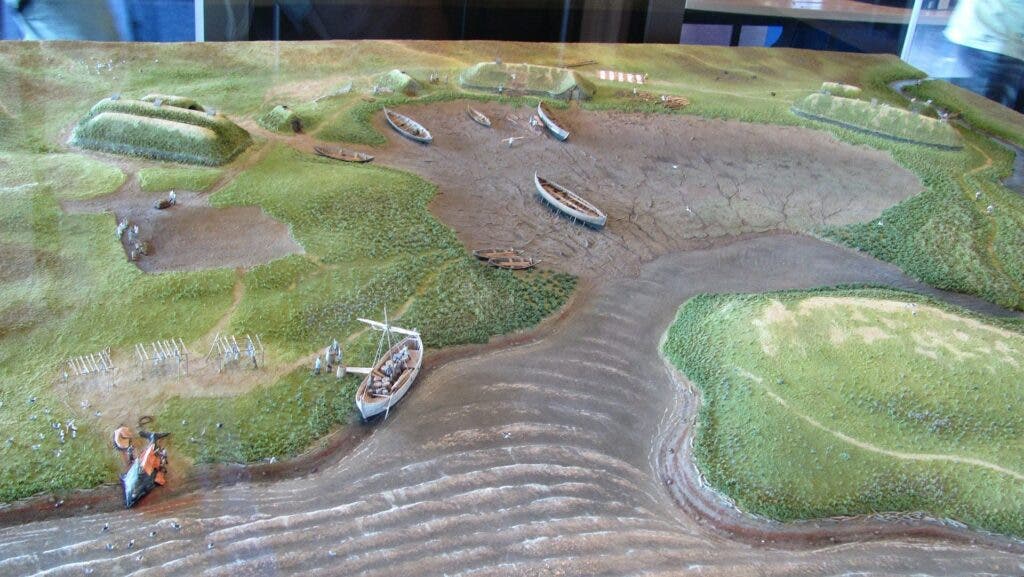A pair of 13th-century Icelandic texts known as the “Vinland Saga” describes the journey of famous Norse explorer Leif Erikson to a land the Vikings called Vinland. Although there’s plenty of poetic license in the saga, researchers have long believed that the essence of the saga is true, and Leif did reach Vinland — a place in North America.
The discovery of a clearly Viking site in L’Anse aux Meadows, Newfoundland in the 1960s is even more tantalizing. The site features several distinctive Norse-style buildings, as well as iron nails, a bronze pin, and several other Viking Artifacts.
There’s even more tantalizing evidence: a collection of wooden chunks whose chops suggest that they were cut with Viking metal axes and not the tools commonly used by the indigenous population who were inhabiting nearby areas.
The archaeologist working on the site, Birgitta Wallace, showed remarkable foresight and froze the chunks of wood. For decades, the artifacts waited in a freezer until finally, their time had come.
In a new study, researchers including Wallace presented a detailed analysis of these chunks, drawing a detailed timeline of when the Vikings arrived: exactly 1002 years ago.
1021 CE: the year the first Europeans (The Vikings) arrived in North America

Scientists had previously used radiocarbon dating on the artifacts, zooming in on a window between the years 793 and 1066 for the Viking arrival. But narrowing the window proved challenging, until recently. In 2012, a breakthrough coming from the most unlikely of places (cosmology) enabled archaeologists to better date this type of artifact.
In the year 993, a large cosmic burst (possibly a solar flare) hit Earth. This caused a surge in the production of carbon-14, an isotope of carbon, a surge that is detectable in tree rings.

Not only is the spike detectable (which means that if a tree doesn’t have the spike, it wasn’t alive at the time of the burst), but it also enables researchers to simply count the number of rings after the spike and date the trees.
The telltale isotope-rich tree ring is dated to 993, so the next ring will be in 994, the next one in 995, and so on. This only works if the tree you’re dating is close enough to the radiocarbon spike. It helps that a similar event happened in 775 C.E., which has already been used to date a Uyghur monument in Russia.
In the new study, researchers led by radiocarbon scientist Michael Dee at the University of Groningen applied this technique to find that the trees the Vikings used were cut 28 years after the 993 C.E. solar flare, or the year 1021 C.E.
It’s unlikely that the wood fragments, which bear tool use, were mere driftwood. The scientists are confident the wood was previously cut down because cut wood quickly loses its strength. It’s also telling that all the analyzed chunks point to the same year.

Overall, the study tells us that by 1021 CE, the Vikings were already in North America. They could have been there earlier, possibly at a different site; but at L’Anse aux Meadows, they already started building structures over a thousand years ago.
It’s remarkable that archaeologists can pinpoint the year when Vikings started building a settlement in North America, and using a cosmic burst of all things. It’s just as remarkable that Vikings reached the continent, over four hundred years before Columbus “discovered” America.
The study was published in Nature.
This story originally appeared in 2022 on ZME Science and was updated with new information.


